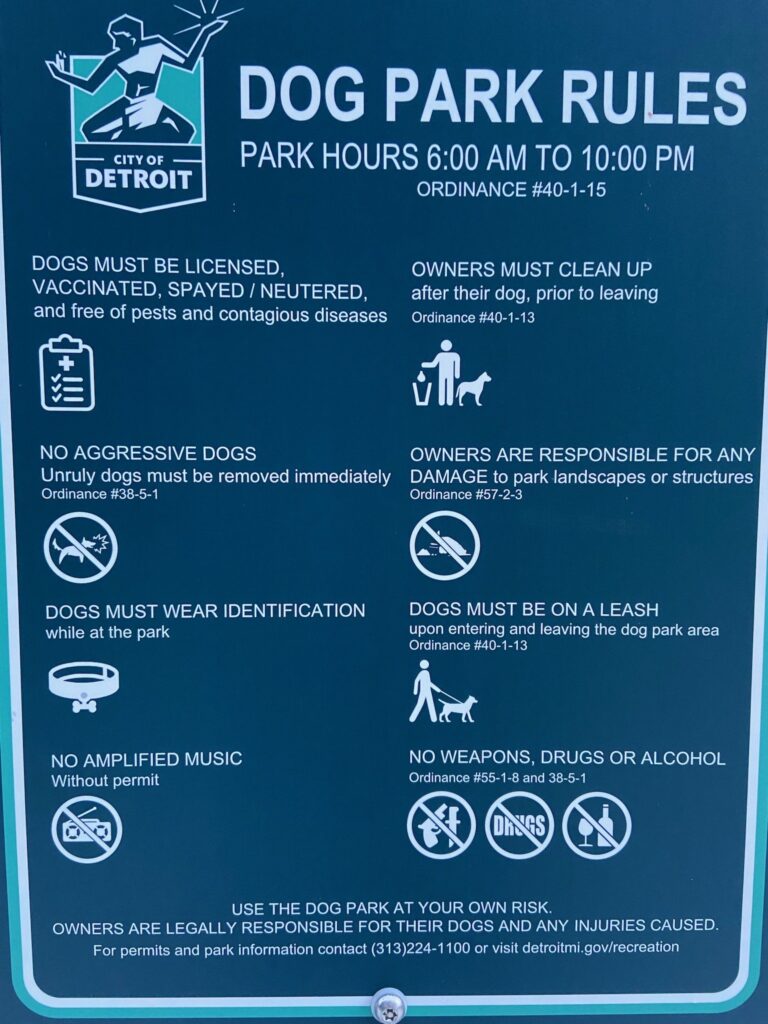Title:
Dog Leash Safety Tips for Every Walk: Ensuring Safety and Comfort for Your Pet
Meta Description:
Learn essential dog leash safety tips for every walk. Discover how to choose the right leash, manage length, and ensure your dog’s safety and comfort during walks.
1. Introduction: Why Dog Leash Safety Matters
Taking your dog for a walk is one of the most rewarding parts of pet ownership, but it also comes with a set of responsibilities. Dog leash safety tips for every walk are crucial to ensure that both you and your dog stay safe, comfortable, and in control. From the right leash to proper training techniques, there’s a lot to consider in order to make your walks enjoyable for both you and your pet.
Without the right leash safety practices, walks can quickly turn stressful. Dogs pulling, getting tangled, or running into dangerous situations are common issues. However, with the correct knowledge and gear, these challenges can be easily managed. This article will guide you through essential safety tips that ensure every walk is not only fun but also secure for both you and your dog.
Choosing the Right Leash and Harness
The first step in ensuring your dog’s safety during walks is to choose the right leash and harness. Using the correct equipment makes a huge difference in your ability to control your dog, prevent injuries, and enhance their walking experience.
2.1 Size Matters: Selecting the Best Leash for Your Dog
Not all leashes are created equal. Leash size and strength depend on your dog’s breed, size, and walking style. Here’s how to choose the right leash based on your dog’s needs:
- Small Dogs: For smaller breeds, a thinner, lighter leash is typically best. A delicate leash offers better control and is less likely to weigh down your dog.
- Medium to Large Dogs: Larger dogs need a thicker, more durable leash to handle their strength. A strong leash helps prevent breakage and ensures you can control them effectively.
- Leash Length: A 4 to 6-foot leash is ideal for most dogs. It offers enough space for your dog to move but ensures you maintain control. Avoid overly long leashes, which can reduce your ability to react quickly in crowded or unsafe situations.
Choosing the right size and material ensures your dog is comfortable and gives you the necessary control to handle various situations during walks.
2.2 Harness vs. Collar: Which is Better for Your Dog?
While a collar might seem like the natural choice for a dog, a harness offers several advantages, especially for dogs that pull or are prone to neck injuries.
- Harness: A harness distributes pressure evenly across your dog’s chest and body, reducing strain on their neck and back. This is especially important for dogs that pull or have respiratory issues.
- Collar: While collars are a convenient option, they can cause neck strain, especially if your dog pulls or tugs on the leash frequently.
If your dog tends to pull or is particularly active, opting for a harness may help provide better control and prevent discomfort. Many harnesses also come with padding to ensure additional comfort.
Check Equipment Regularly
Maintaining your equipment is key to keeping your dog safe during walks. Inspecting your leash and harness regularly helps ensure that they function properly and reduce the risk of failure during walks.
3.1 Inspect for Wear and Tear
Before each walk, check your leash and harness for any signs of damage. If your equipment is worn out or broken, it could compromise your dog’s safety. Here’s what to look out for:
- Fraying: Check the leash for fraying or signs of weakness, especially if it’s made from fabric. Fraying can lead to a snapped leash during use.
- Loose or Broken Hardware: Ensure that the leash clasp and harness fastenings are secure. Broken clips or buckles can lead to dangerous situations, including your dog slipping out of the harness.
If you notice any issues with your gear, it’s time to replace or repair it before going on another walk.
3.2 Ensure Secure Fastenings
Before attaching the leash to your dog, double-check that both the harness and leash are properly fastened. Even a small mistake could result in a dangerous situation.
- Check the Harness Fit: Ensure that the harness is snug but not too tight. You should be able to slide two fingers underneath the harness comfortably.
- Secure the Leash: Make sure the leash is fully attached to the harness or collar before walking. A detached leash could lead to accidents if your dog suddenly bolts.
By ensuring your gear is secure, you reduce the likelihood of accidents occurring while out for a walk.
Controlling the Length of the Leash
Managing the length of your dog’s leash is an important aspect of leash safety. Whether using a standard leash or a retractable one, the length affects your ability to control your dog and maintain a safe distance from potential hazards.
4.1 The Importance of Leash Length
- Short Leashes: Shorter leashes (4-6 feet) offer maximum control, which is important in busy areas or when your dog is distracted by other animals or people. They help prevent your dog from running into traffic or getting too close to other dogs.
- Long Leashes: While they offer more freedom, long leashes (usually 10-20 feet) can lead to tripping hazards and are harder to manage. Use them in open, secure areas where you can give your dog room to explore but still maintain control.
Shorter leashes are best for navigating urban environments or crowded spaces where quick reactions are necessary, while longer leashes are better for open spaces like parks where you want your dog to have more freedom.
4.2 Tips for Using Retractable Leashes Safely
Retractable leashes can offer more flexibility, but they come with their own set of safety risks. If used improperly, retractable leashes can cause accidents or injuries.
- Control the Length: Always retract the leash when your dog is too far ahead. Keep the leash short in crowded areas to avoid accidents.
- Avoid Sudden Stops: Retractable leashes can jerk when you stop them suddenly. This can hurt both you and your dog. Always maintain a relaxed grip and stop the leash gradually.
When using a retractable leash, always be aware of your surroundings and use it with caution. It’s important to have control, especially when navigating areas with other dogs or pedestrians.
Call to Action
Want to ensure a safe and enjoyable walk for your dog? Shop Found My Animal for durable, stylish leashes and harnesses designed with safety and comfort in mind. Use the code “mytopdeals10” for a 10% discount on your purchase. Equip yourself and your dog with the best gear for every walk!
In the next part of the article, we will discuss how to practice loose leash walking, stay alert for potential distractions, and use positive reinforcement to improve your dog’s walking behavior. Stay tuned!
Practice Loose Leash Walking
One of the most important aspects of dog leash safety is training your dog to walk calmly without pulling. Loose leash walking not only improves your control but also makes the walk more enjoyable for both you and your dog.
5.1 Training Your Dog to Walk with a Loose Leash
Training your dog to walk with a loose leash is essential for maintaining control and reducing stress on both you and your dog. Here’s how to get started:
- Reward Good Behavior: When your dog walks calmly next to you without pulling, reward them with treats and praise. This reinforces the behavior you want to see.
- Stop When They Pull: If your dog starts pulling, stop walking immediately. Don’t continue until the leash is loose again. This teaches your dog that pulling doesn’t get them anywhere.
- Use a Consistent Cue: Consistently use a cue, such as “let’s go” or “heel,” whenever you want your dog to walk by your side. This helps them understand what is expected.
- Increase Duration Gradually: Start with short training sessions and gradually increase the time you walk with your dog on a loose leash.
With patience and consistency, your dog will learn to walk calmly by your side, making your walks much more enjoyable and safe.
5.2 Stay Alert for Potential Hazards
While practicing loose leash walking is essential, staying aware of your surroundings is just as important. Here’s how to stay alert:
- Watch for Distractions: Dogs can easily get distracted by other animals, people, or smells. Keep an eye on your dog’s body language and be ready to redirect their attention if necessary.
- Avoid Crowds: If you’re in a busy area, keep your dog close to avoid potential accidents with other dogs or people.
- Watch for Hazards on the Ground: Look out for potential dangers such as broken glass, sharp objects, or puddles that could cause your dog to slip or get injured.
Being alert ensures that both you and your dog stay safe during your walk and helps you anticipate potential distractions or hazards before they become a problem.
Be Mindful of Your Surroundings
Another crucial aspect of dog leash safety is being aware of your environment. Understanding how to adjust your walking routine based on the setting is essential for safety.
6.1 Walking in Crowded Areas
Walking in crowded areas can present unique challenges. Whether you’re in a busy park or a bustling street, it’s essential to manage your dog’s behavior and ensure their safety.
- Shorten the Leash: In crowded areas, keep your dog close by using a shorter leash to maintain control and prevent them from getting too close to other people or dogs.
- Use a Calm Voice: Keep your dog calm and focused by using a soothing tone of voice and giving gentle commands. This will help them stay relaxed in busy settings.
- Anticipate Other Dogs: If you see another dog approaching, be ready to give your dog a quick command to ensure they don’t react aggressively or get too excited.
Having control over your dog in busy areas not only ensures their safety but also creates a positive experience for everyone around you.
6.2 Using Reflective Gear for Night Walks
If you walk your dog during the evening or night, visibility becomes a key safety concern. Reflective gear is an easy way to make sure you and your dog are visible to others.
- Reflective Leashes and Harnesses: Choose leashes and harnesses made with reflective materials. These ensure that your dog is visible in low-light conditions, such as during dusk or at night.
- Bright Colors: Opt for brightly colored leashes and harnesses that stand out in the dark. Neon greens, oranges, and yellows are particularly effective.
- Reflective Accessories: You can also use reflective tags or collars to increase your dog’s visibility, especially if you’re walking in areas with low street lighting.
Using reflective gear is an easy and effective way to improve visibility and make sure both you and your dog are safe during night walks.
FAQs About Dog Leash Safety Tips
What makes Found My Animal products unique?
Found My Animal is known for its high-quality, customizable pet products, including durable, stylish leashes and harnesses. Their products combine safety with aesthetics, ensuring that your dog not only stays comfortable but also looks great. The brand offers eco-friendly materials and customizable options like engraving, making each item unique to your pet’s needs. Explore Found My Animal now for high-quality leashes and harnesses designed for safety, comfort, and style.
How can I use the discount code mytopdeals10 at checkout?
To use the discount code “mytopdeals10” at checkout, simply visit Found My Animal, add your desired leash or harness to your cart, and enter the code in the discount field at checkout. You’ll receive a 10% discount on your order instantly!
How do I know if my dog is ready for loose leash walking?
Your dog is ready for loose leash walking if they are already somewhat responsive to basic commands like “sit” or “stay.” Start in a calm, familiar environment and gradually work up to more distractions. If your dog pulls frequently, consider starting with shorter training sessions and using treats to reinforce good behavior.
How do I choose the right leash for my dog’s size?
Choosing the right leash depends on your dog’s size and behavior. For small dogs, a thinner, lighter leash is best, while larger dogs require a thicker, stronger leash. Consider your dog’s strength and activity level to ensure the leash can handle their movements.
Conclusion: Safe and Enjoyable Walks with Your Dog
Dog leash safety tips for every walk are essential to creating a safe, enjoyable experience for both you and your pet. By choosing the right leash, practicing loose leash walking, and being mindful of your surroundings, you can ensure that your walks are not only safe but also fun. Remember, regular equipment checks and staying alert to potential hazards can help you avoid accidents and make each walk a rewarding experience for both you and your dog.
Shop Found My Animal today for high-quality, stylish leashes and harnesses that are perfect for every walk. Don’t forget to use the code “mytopdeals10” for a 10% discount on your order! Start walking safely today!
Internal Link:
For more tips on pet safety and accessories, check out our guide on the best dog products.
External Link:
For more information on leash training and dog safety, visit The American Kennel Club’s training guide.
[Image inserted here: Reflective Dog Leash from Found My Animal]
ALT Text: Reflective dog leash and harness set for safe night walks.
https://images.squarespace-cdn.com/content/v1/631397176ddd1917e7404579/ff9788c1-596a-4f5f-ab13-5e241072185a/IMG_3049.jpeg



